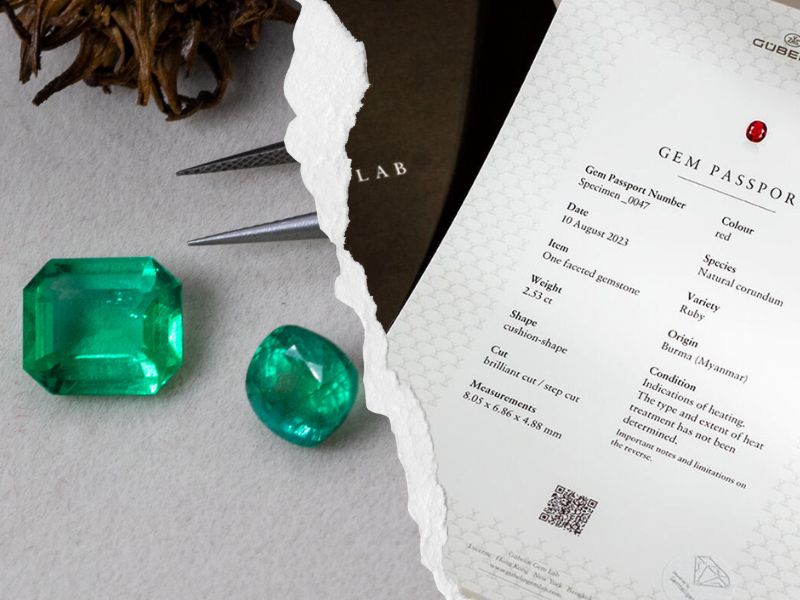
Which Gemstones Require Certification?
Share
Which Gemstones Require Certification?

A certificate is not just a document—it serves as a guarantee of authenticity and confirmation of a gemstone’s characteristics, both of which can significantly impact its value. In my experience, certification is essential in specific cases, particularly for rare, valuable, or distinctive gemstones. Below are the types of stones that, based on practice, require certification.
1. Untreated Sapphires and Rubies
If a sapphire or ruby is being sold as untreated (not heat-treated), always request a certificate to verify this claim. Untreated stones are significantly more valuable than treated ones, and the price difference can be substantial. A certificate ensures that you are paying for a natural stone with its original properties intact.
2. Investment-Grade Gemstones
When purchasing a gemstone as an investment, certification is a necessity. It verifies the stone’s authenticity and characteristics, which are crucial for both future appraisal and resale.
3. Stones with a Color-Change Effect
Gemstones that exhibit a color-change effect, such as alexandrites, certain garnets, and sapphires, require certification. The certificate confirms the intensity of the color transition and specifies the exact hues involved. Since a gemstone’s value is closely tied to the strength of its color change, having an official record is essential. Certificates often include photographs of the gemstone under artificial and daylight conditions, providing a clear reference for its transformation.
4. Paraiba Tourmalines
Paraiba tourmaline is one of the rarest and most valuable tourmalines, distinguished by its neon blue hue caused by the presence of copper and manganese. Unlike other brightly colored tourmalines that derive their hues from iron, Paraiba’s unique vibrancy is a result of these specific elements. A certificate confirming the presence of copper and manganese is critical for verifying the stone’s authenticity and ensuring its premium value.
5. Star Sapphires
For star sapphires, certification is necessary to confirm that the asterism (star effect) is naturally occurring rather than artificially induced.
6. Emeralds
When purchasing a high-value emerald, particularly one marketed as “oil-free,” a certificate is essential. Oil treatment is commonly used to enhance an emerald’s appearance, but untreated stones are far more valuable. A certificate provides confirmation that the emerald matches its stated characteristics.
7. Red Garnets
Certain red garnets, such as Malaia garnet, require certification to distinguish them from other varieties. Identifying garnet types—Malaia, Rhodolite, Almandine, and Pyrope—can be extremely difficult without laboratory analysis. It is not uncommon for a gemstone sold as Malaia garnet to turn out to be Rhodolite or for a darker garnet to be mistaken for Almandine, which is significantly less valuable. Certification ensures that you are getting the precise variety you intend to purchase.
8. Stones with Significant Origins (e.g., Burmese Rubies and Spinels)
A gemstone’s geographic origin can significantly affect its value. For example, Burmese (Myanmar) rubies and spinels are highly regarded and often command higher prices than stones from other regions. If a ruby or spinel is claimed to be from Burma, a certificate verifying its origin is crucial. In my experience, stones advertised as Burmese have sometimes turned out to be from Tanzania—while Tanzanian gemstones can also be of high quality, Burmese provenance holds a premium status in the market.
9. Rare and Collectible Stones
For rare gemstones such as Triphane, Afghanite, Clinohumite, and Grandidierite, certification is a must. These stones are exceptionally scarce, and their authenticity requires specialized verification. A certificate guarantees that you are acquiring a genuine collectible gemstone that will retain its value over time.

Olga Bachurina,
Co-Founder of Venus in Libra,
Certified by GIA & Gübelin Academy



